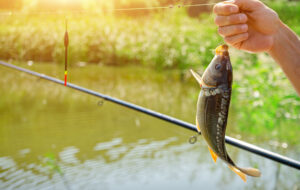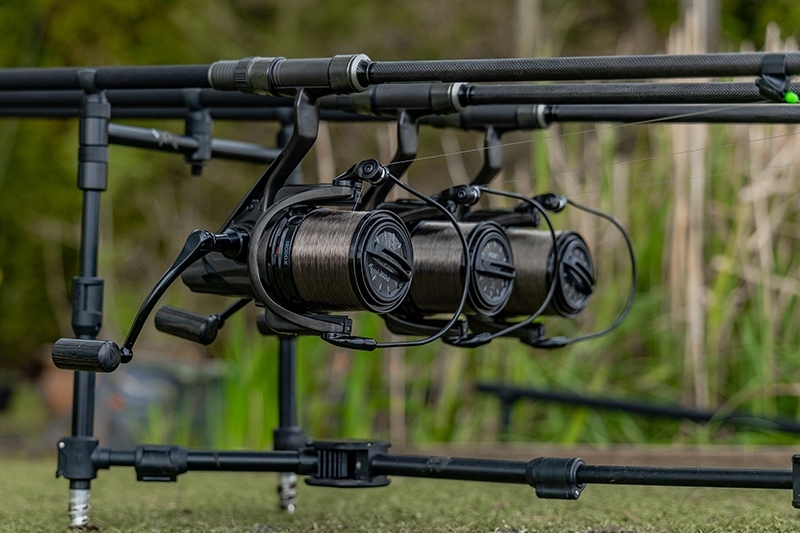Are you an avid fisherman looking to catch some of the biggest and most challenging fish out there? Look no further than carp fishing! Carp are notorious for being elusive and difficult to catch, but with the right bait, you could have a successful trip every time. In this blog post, we’ll go over the top 5 carp baits that will guarantee your next fishing trip is a success. So grab your rods and let’s dive in!
What are Carp?
Carp are a species of freshwater fish that can be found all over the world. They are known for their large size, with some species growing up to 4 feet in length and weighing more than 50 pounds! Carp come in many different colors and patterns, including silver, bronze, and even black.
One unique feature of carp is their ability to adapt to various environments. They can thrive in both still waters like lakes and rivers as well as flowing waters such as streams or creeks. Carp also have an excellent sense of smell which makes them highly responsive to baited hooks.
Another interesting fact about carp is that they are omnivorous animals meaning they eat both plants and animals. Their diet consists mainly of insects, crustaceans, small fish, algae and aquatic plants.
In addition to being a popular game fish for anglers around the world due its size and agility during catch-and-release fishing practices , carp are also considered a delicacy in some cultures where it is prepared via smoking or served fried with spices
Types of Carp
When it comes to carp fishing, there are many different types of carp you can catch. In fact, there are over 100 species of carp! However, the most common types of carp that people fish for in North America and Europe are the Common Carp, Mirror Carp, Leather Carp, and Ghost Carp.
Common Carp (Cyprinus carpio) is the most widespread type of carp found throughout North America and Europe. They have a gold to bronze coloring with large scales covering their body.
Mirror Carp (Cyprinus carpio) has fewer scales than other types of carp, which makes them look more like mirrors when they reflect light. These fish usually have a brownish or bronze coloration on top with yellow or white bellies.
Leather Carp (Cyprinus carpio) are characterized by their smooth skin without any visible scales. Their skin looks almost rubbery to the touch and they come in various colors ranging from dark brown to greenish-brown.
Ghost Carp (Hypophthalmichthys molitrix) is a silvery-white colored fish with translucent fins and tail. They got their name because they seem almost transparent under certain lighting conditions.
Each type of carp requires slightly different tactics when catching them due to differences in behavior and feeding habits; therefore knowing which species you’re targeting can be helpful for success while out on your next fishing trip!
How to Catch Carp

Catching carp requires a bit of technique and patience. One important thing to keep in mind is that carp are bottom feeders, so it’s crucial to get your bait as close to the bottom as possible.
A common method for catching carp is using a hair rig. This involves tying your bait onto a short piece of line, which is then attached to the mainline with a small loop. The hook should be exposed just enough so that the fish can take it without feeling any resistance.
Another key element is selecting the right bait. Sweetcorn, boilies, and pellets are popular choices for carp fishing. It’s important to use fresh bait and change it regularly throughout your session.
Location is also critical when fishing for carp. Look for areas with structure such as weed beds or drop-offs where they may be feeding or resting.
When you feel a bite on your line, resist the urge to immediately reel in. Let the fish take some slack before gently lifting your rod tip and reeling in slowly but steadily.
With these tips in mind, you’ll be well on your way to landing some impressive carp on your next fishing trip!
What to do with Carp
Once you have caught your carp, it is important to know what to do with it. First and foremost, ensure that the fish is handled with care and respect. Carp are hardy creatures but can experience stress if not treated properly.
If you plan on keeping the carp for consumption, make sure to clean and gut it as soon as possible after catching it. This helps preserve the quality of the meat. Carp can be prepared in a variety of ways including smoking, grilling or frying.
If you prefer catch-and-release fishing, then follow these guidelines: keep the fish in water at all times while removing hooks; don’t touch their gills; avoid squeezing them too hard; support their body weight when lifting them out of the water; minimize air exposure time by taking quick pictures and returning them back into the water immediately.
Carp also serve an important ecological role in aquatic ecosystems so releasing them unharmed back into their natural habitat is highly recommended. Just remember that proper handling techniques will increase their chance of survival once released back into the wild.
Whether you choose to consume or release your catch, always treat carp with care and respect throughout every step of your fishing trip.
Conclusion
Catching carp can be a thrilling experience for any angler. By using the right bait, you can make your fishing trip more successful and enjoyable. The top 5 carp baits that we have discussed in this article are proven to attract and catch these fish.
It’s important to remember that different types of bait work better in different situations, so it’s always a good idea to experiment with different options until you find what works best for you.
When fishing for carp, it’s also crucial to practice proper handling techniques and release any unwanted catches back into the water unharmed.
We hope that this article has provided valuable insight into selecting the best carp bait for your next fishing trip. Happy fishing!






